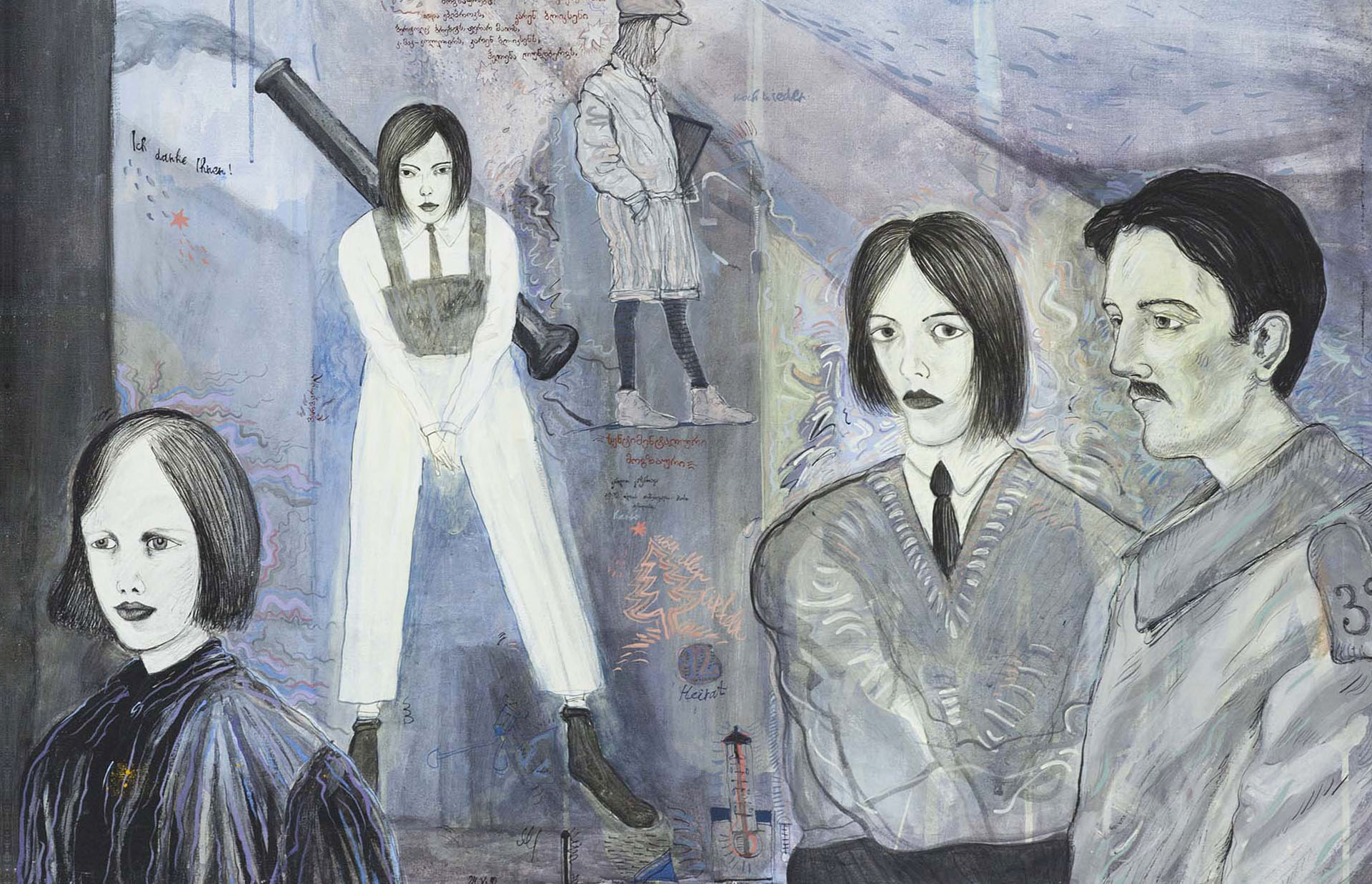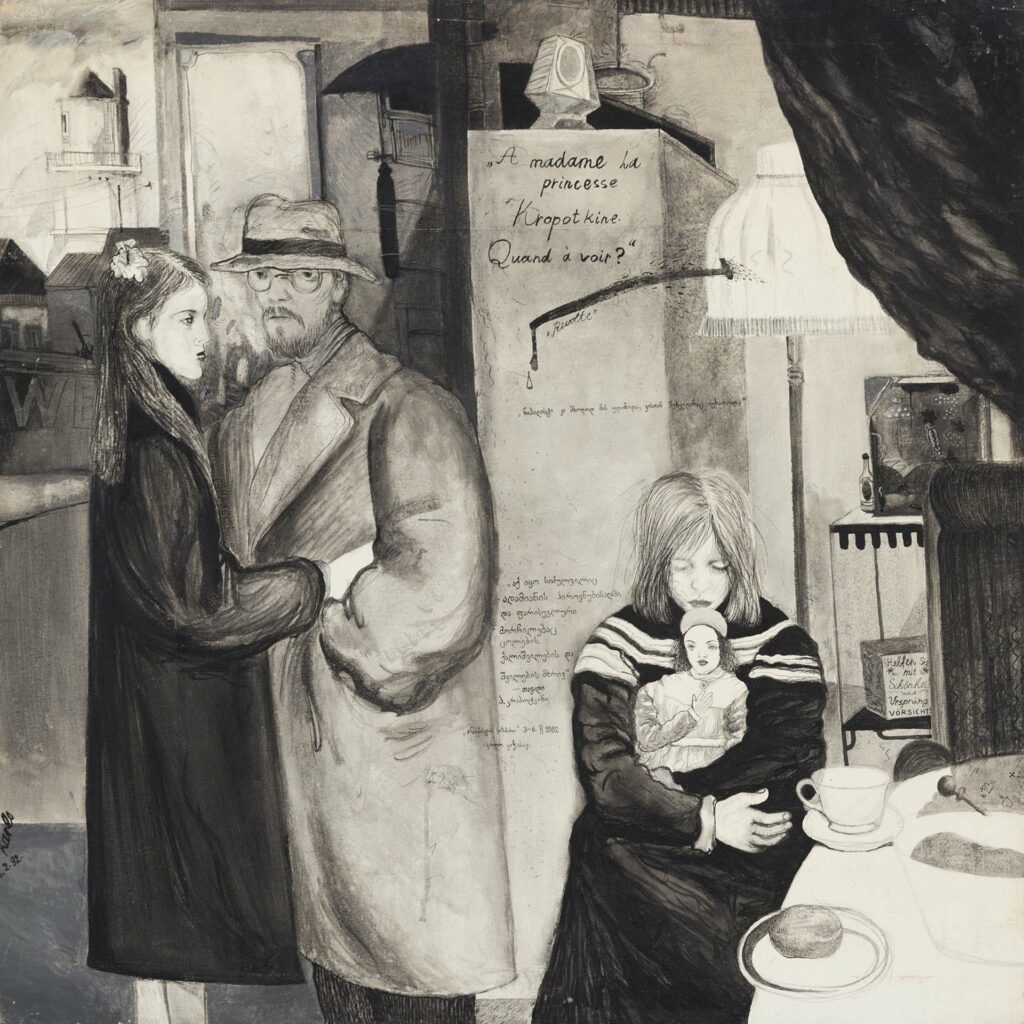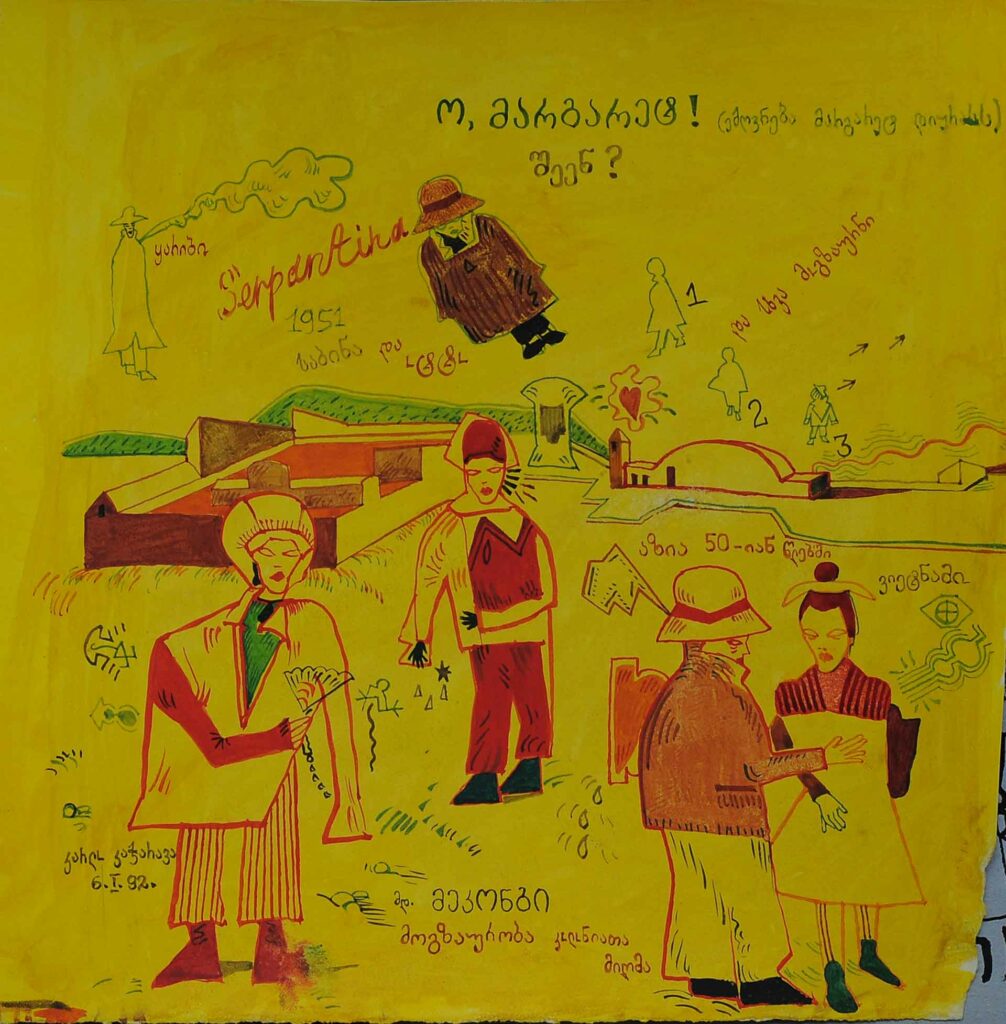Text and visual image are often interchangeable in the works of Karlo Kacharava (კარლო კაჭარავა),
Georgian art critic, artist and poet (1964-1994). He inscribed notes on and
inserted texts into his paintings. Similarly, his writings contain many sketches and
colour illustrations. His Cologne Diary, published with the support of the Goethe Institut Georgia, is a prime example of such interchangeability between visual
image and text. The book is a facsimile of Kacharava’s original diary from 1991.
His work is full of cultural, historical and quotidian references – one can easily
reconstruct the period from the visual and textual details included in his paintings
and drawings. But first and foremost, the album is the travel diary of an artist, he
writes on the first page of the diary in capital letters in German: “Eine Reise…”
anfgeord underneath it “Moskau – Köln – Berlin – Köln.”
Karlo Kacharava’s Sentimental Traveler, dated February-May 1992, was painted
on canvas with text inscribed onto it. The beginning of 1992 was a particularly
tumultuous time in the history of Georgia – many political changes occurred
within a short period of time. Surprisingly, however, artistic life carried on – in his
private diary the artist mentions attending exhibition openings and other social
gatherings with fellow artists.
Karlo Kacharava. Sentimental Traveler. 120×100. Temper on canvas. 1992
Prolific both in his writing and painting, Kacharava rarely worked on any artwork
for as long as the 4 months he spent working on Sentimental Traveler. The exact
date of completion is marked on the bottom left edge of the painting – May 24,
1992. According to his sister, the artist would often paint over the same canvas
more than once. He also tended to work on a number of paintings at the same time. Another of his
works, Anarchist’s Dream, is thus signed and dated February 3-6, 1992. [1]
Karlo Kacharava. Anarchist’s Dream. 100 x 100. Tempera on canvas. 1992
In the centre of Sentimental Traveler there are two text dedications in Georgian –
a quote from Karen Blixen “we can’t be unhappy tonight” and almost overlapping
this phrase in slightly darker paint, Kacharava has written: this painting is
dedicated to sentimental travelers: Ida Applebroog, Bertolt Brecht, Gerard Mayo, Carson McCullers, Karen Blixen, Helena Lundberg. The latter was his muse and
his beloved, who he often referred to in paintings with the refrain – Fur Helena.
Sentimental Traveler has two diagonal compositional lines in it: starting from the
bottom left-hand corner there is a succession of three female figures. It appears
that this could represent the passage of time in a person’s life – a portrait of a teen
girl is followed by a full-length portrait of an adolescent girl carrying an
instrument on her back, and finally a young woman in a hat holding a book under
her arm. The latter’s face is turned away and hidden under her hair; her figure and
outfit resemble a reoccurring figure from Kacharava’s earlier paintings, especially
from Prosperidad, 1990. The title of the painting, “Sentimental Traveler” is
written in quotation marks in sepia paint right underneath her feet, along with the
artist’s signature and the date. There are also occasional words in German in the
painting – Hairat, nochbeider, etc.
The bottom right-hand corner of the painting depicts a couple: a man is seen in
profile, dressed in a military winter coat with the number 32 on the epaulette, and
next to him facing the viewer is another archetypal Kacharava portrait of a
woman. In the middle section of the painting, between the figures and the upper
landscape, there are two kerosene lamps. Due to frequent power outages in the
city, kerosene lamps were objets du jour in 1992.
In the Cologne Diary, Kacharava mentions Marguerite Duras several times. There
is a drawing dated January 6, 1992 which has a bright yellow background and
disjointed words in Georgian script are used as visual elements in the composition:
“Mekong,” “travelers,” “travel beyond colonies,” ”Asia in the 50s,” “Vietnam,” and
at the top of the picture in the centre “O Margaret!” with a dedication to
Marguerite Duras written in parenthesis next to it.
Karlo Kacharava. O Margaret. 22 x 23. Watercolor on paper. 1992
Even though Kacharava does not mention Duras among his list of Sentimental
Travelers, the title could have been inspired by her novels, as well as by the
nostalgia of his own travels to Cologne and Berlin.
__________________________________________
1. From his personal notebooks, we learn that the artist was reading Pyotr
Kropotkin’s Memoirs of a Revolutionist at the time. He made notes and translated
Kropotkin’s text into Georgian, quoting his own translation in the painting





